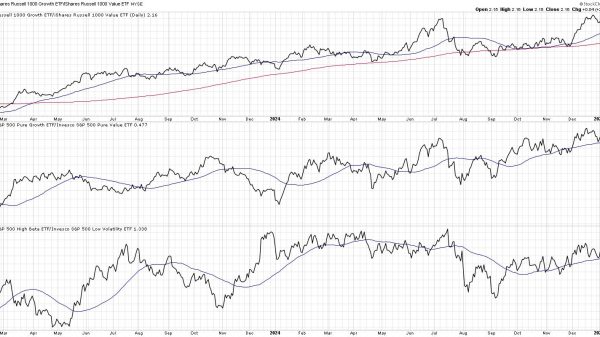The rise of the Internet of Things (IoT) is reshaping industries worldwide, and building management systems (BMS) are no exception. Traditionally, BMS has been centered on manual operations and isolated systems, often leading to inefficiencies and increased operational costs. Today, IoT-enabled smart building technology is transforming how buildings are managed, making them more efficient, sustainable, and responsive. This article explores how IoT is revolutionizing building management systems and what this means for the future of smart buildings.
Understanding Smart Building Technology
Smart building technology refers to the integration of IoT devices and sensors into building management systems to create an interconnected environment. These systems collect real-time data on various building functions, including HVAC, lighting, security, and energy usage. By leveraging IoT, smart building technology enhances the efficiency, comfort, and safety of building occupants while reducing operational costs.
The key to smart building technology lies in its ability to connect and communicate. IoT devices and sensors transmit data to a central system, allowing for continuous monitoring, analysis, and optimization of building operations. This interconnectedness offers building managers unprecedented control over their assets, enabling predictive maintenance, energy savings, and a more responsive environment.
The Role of IoT in Smart Buildings
IoT plays a crucial role in the transformation of traditional buildings into smart buildings. By integrating a wide array of sensors and devices, IoT enables real-time data collection and communication across various building functions such as HVAC, lighting, security, and energy management. This interconnected approach allows building management systems to continuously monitor and optimize operations, enhancing energy efficiency, reducing operational costs, and improving occupant comfort and safety. The ability of IoT to provide predictive insights and automate decision-making processes is a game-changer, positioning IoT as a key driver in the evolution of smart building technology.
Key Benefits of IoT in Building Management Systems
1. Enhanced Energy Efficiency: One of the most significant advantages of IoT in building management is improved energy efficiency. IoT sensors monitor real-time energy consumption and adjust lighting, heating, and cooling systems based on occupancy and environmental conditions. For instance, smart thermostats can automatically adjust temperature settings when rooms are unoccupied, reducing energy waste. 2. Predictive Maintenance: Traditional building maintenance often relies on reactive approaches, addressing issues only after they arise. IoT changes this paradigm through predictive maintenance. Sensors continuously monitor the health of equipment, detecting signs of wear and potential failures before they become critical. For example, a sensor on an HVAC unit can detect abnormal vibrations or temperature changes, alerting maintenance teams before a breakdown occurs. This proactive approach not only minimizes downtime but also extends the lifespan of equipment and reduces repair costs. 3. Improved Occupant Comfort and Safety: IoT enhances the comfort and safety of building occupants by automating environmental controls and security systems. Smart lighting systems adjust based on natural light levels, improving visual comfort and reducing energy usage. IoT-enabled HVAC systems ensure optimal indoor air quality, adjusting ventilation rates based on occupancy and pollutant levels. In terms of safety, IoT sensors can monitor smoke, gas leaks, or unauthorized access, providing real-time alerts to building managers and emergency responders. This level of responsiveness is critical in minimizing risks and ensuring the safety of building occupants. 4. Data-Driven Decision Making: The vast amount of data generated by IoT devices in smart buildings is a valuable resource for decision-making.Aggregating and analyzing this data offers insights that can inform strategic decisions regarding building operations. For instance, data analytics can reveal patterns in energy usage, helping managers make informed decisions about retrofitting, equipment upgrades, or adjusting operational schedules. Moreover, advanced analytics can simulate different scenarios, allowing building managers to test the impact of potential changes before implementation. This data-driven approach reduces uncertainty and enhances the effectiveness of management strategies.Challenges and Considerations in IoT-Enabled Building Management
While the benefits of IoT in building management are significant, there are challenges to consider. These include:
1. Data Security and Privacy: The interconnected nature of IoT devices raises concerns about data security and privacy. With numerous sensors collecting data from various building systems, the risk of cyber-attacks increases. It is essential for building managers to implement robust cybersecurity measures, such as encryption, firewalls, and secure access controls, to protect sensitive information. 2. Integration of Legacy Systems: Many buildings still rely on legacy systems that are not designed to communicate with modern IoT devices. Integrating these older systems with new IoT technology can be complex and costly. 3. Cost and ROI Considerations: Implementing IoT technology requires upfront investment in sensors, devices, and platforms. Building managers must carefully assess the costs and potential return on investment (ROI) to justify the expense. However, the long-term benefits of energy savings, reduced maintenance costs, and improved building performance often outweigh the initial investment.The Future of IoT in Building Management Systems
The future of IoT in building management looks promising, with continued advancements in technology set to further enhance the capabilities of smart buildings. Artificial intelligence (AI) and machine learning are expected to play an increasingly important role, providing predictive analytics and autonomous decision-making capabilities that will make building management even more efficient.
Moreover, the integration of IoT with other emerging technologies, such as 5G and edge computing, will enable faster data processing and real-time responsiveness. This will allow building managers to react instantly to changing conditions, further optimizing performance and improving the overall occupant experience. As smart building technology continues to evolve, CIM platforms will remain at the heart of these advancements, providing the critical infrastructure needed to support the seamless operation of IoT-enabled building management systems.
Conclusion
IoT is revolutionizing building management systems by making them smarter, more efficient, and more responsive to the needs of occupants. Through the integration of IoT devices, sensors, and platforms, smart building technology provides real-time insights and automation capabilities that drive significant improvements in energy efficiency, predictive maintenance, and occupant comfort.
While challenges such as data security and integration remain, the benefits of IoT in building management far outweigh the hurdles. As technology continues to advance, IoT-enabled building management systems will become an essential component of modern building operations, setting the stage for a more connected and sustainable future.
The post How IoT is Revolutionizing Building Management Systems appeared first on IoT Business News.

































